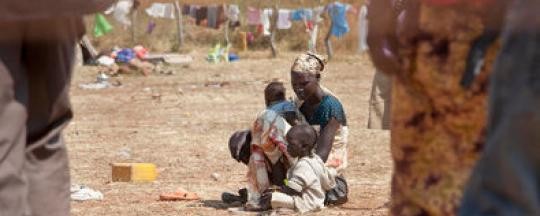Around 4.4 million people in South Sudan are severely food insecure and risk dying of causes related to hunger, according to an internal U.N. agency document obtained by Radio Tamazuj.
The Integrated Food Security Phase Classification, a joint report between UNICEF, WFP, and FAO, said that the number represents 37 percent of South Sudan’s population. The report was scheduled to be released in late September, but because the agencies give South Sudan’s government the ability to approve the results, it has not been released.
The intenral report however is an alarming look at a nearly unprecedented rise in hunger across South Sudan.
“Compared to the same period last year, an additional 13% of the population has slipped into Crisis and Emergency food insecurity, showing an overall deterioration of the food security situation,” the report said.
Roughly 30,000 people are living in “catastrophic” hunger conditions in Aweil North and Aweil West, according to the report, due to conflict and an economic crisis.
“In August to September 2016, Greater Northern Bahr el Ghazal has 72% of its population facing Crisis, Emergency and Catastrophe food insecurity,” the report added.
Other regions of the country are nearly as bad, with 61 percent of Greater Unity state facing Crisis and Emergency levels of food insecurity.
Because of recent fighting and displacement, the greatest deterioration in hunger levels in South Sudan has been Central Equatoria, with Lainya being the most affected in the country. What has traditionally been the bread basket of South Sudan, the Equatoria’s now have 60,000 people living in emergency levels of hunger, according to the internal report.
But the greatest improvement in the hunger levels in South Sudan has been the Greater Jonglei and Upper Nile. In Upper Nile, at least 100,000 people have moved out of emergency food levels because of “improved security, greater access to food assistance and agricultural inputs, re-establishment of livelihoods and improved market functionality,”




